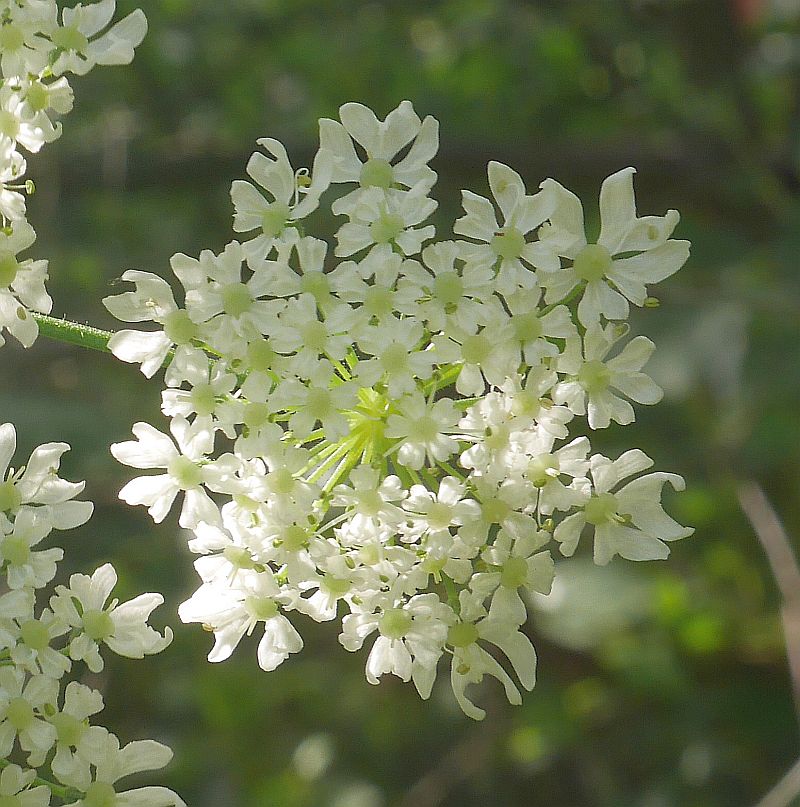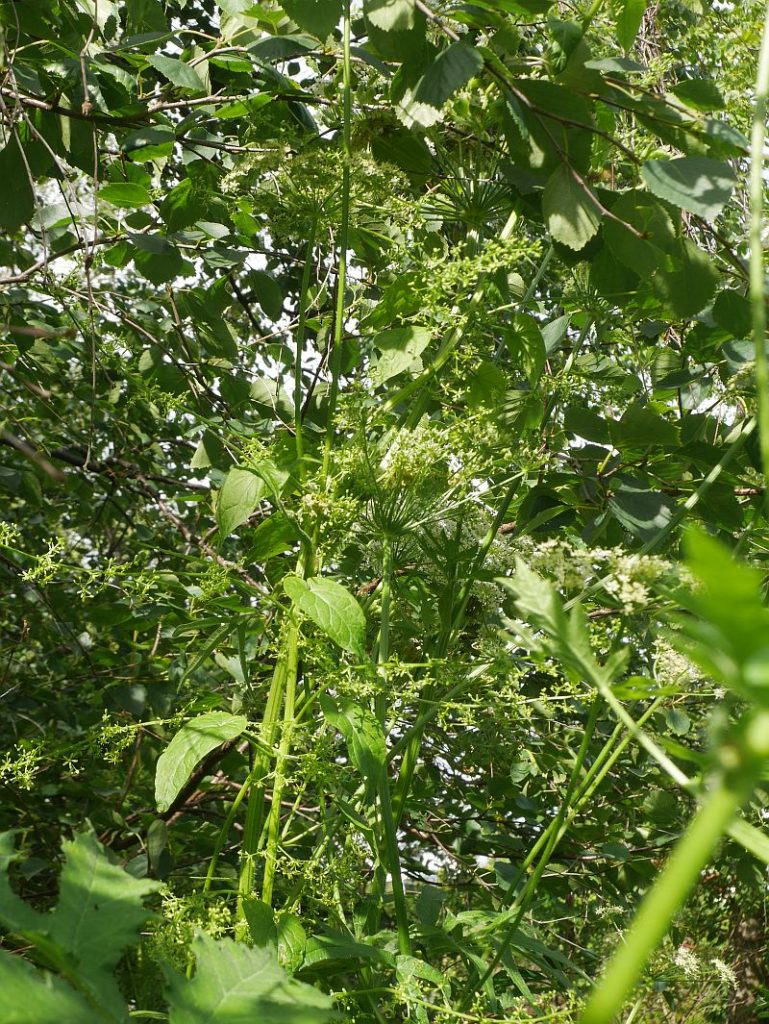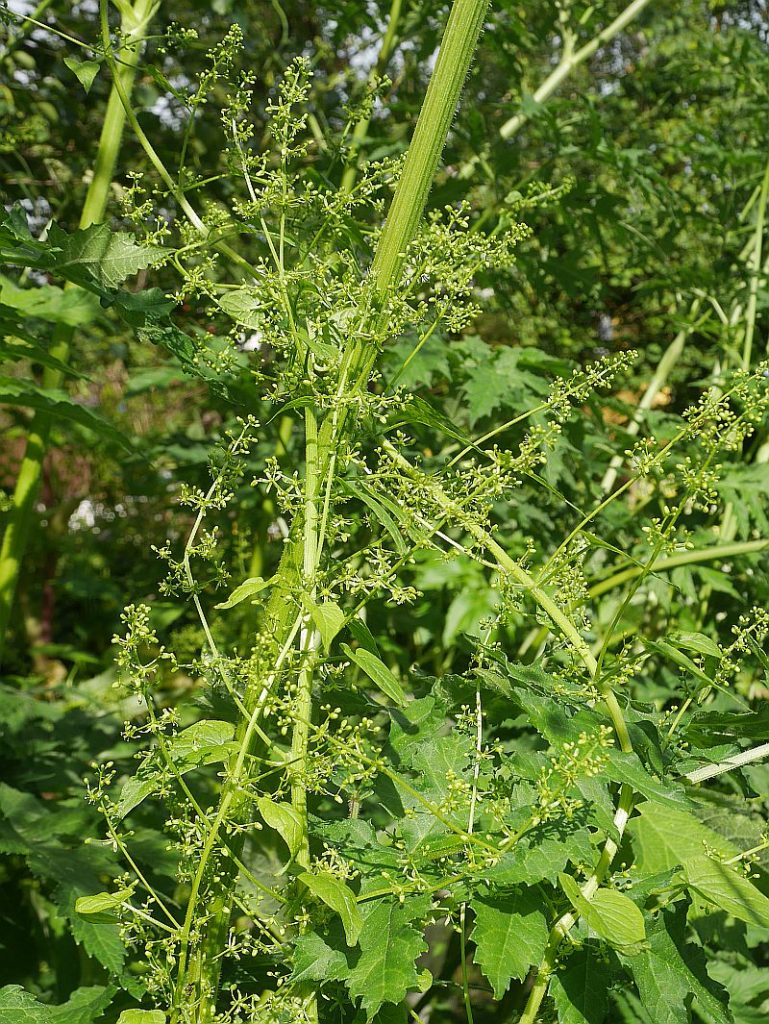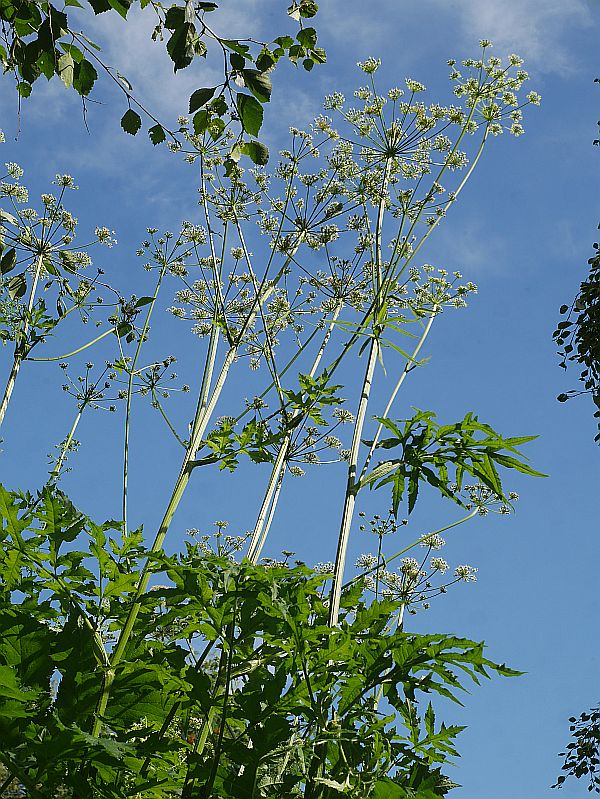It always amazes me how edible plants in my garden find their own best companions andystem create together really productive microsystems, often on really marginal parts of the garden that I never imagined could be so productive, such is the magic of perennials!
Here are a couple of videos showing two of these areas:
- The edge of what was a shady bed previously used to grow annuals. I planted Hosta sieboldiana and Rumex scutatus on the edge of this bed with an Onoclea sensibilis (sensitive fern / perlebregne), one of the species sometimes eaten as fiddleheads. The shade encouraged first a Hablitzia to self-seed and next to it a large stinging nettle. A siberian hogweed (Heracleum sibiridum) also found a place in the mix! Perennial kales are growing on the rest of this bed this year! The video starts with the flower umbel of a pink flowered Heracleum sphondylium (common hogweed):Video Player00:0000:00
- The second area is at the end of one of my originally annual beds where I struggled to grow vegetables as it was very dry and under the shade of a large birch tree. Here I planted a number of Hablitzia plants 12 years ago and they love this spot producing good yields and climbing up into the birch tree in summer with the help of stakes I provided for them. Now, hogweeds have moved in (self-seeded), both Heracleum sibiricum and H. sphondylium and the Hablitzia is now using the 2.5m high hogweeds as climbing support!Video Player00:0000:00
Reaching towards the top of the self-sowed hogweeds (bjørnekjeks)….Hablitzia is using these plants as climbing support this year! Heracleum sphondylium Hablitzia intertwined with Hogweed Hablitzia intertwined with Hogweed Very tall hogweeds this year!





